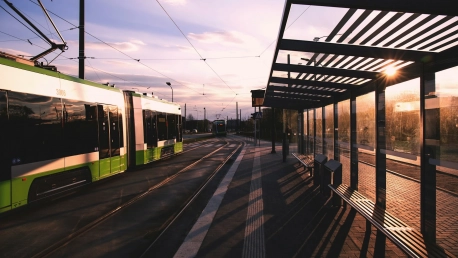The U.S. Department of Transportation is revolutionizing public transit through the Bipartisan Infrastructure Law (BIL), which earmarks an impressive $108 billion. This law is setting new records for federal investment in public transport over the 2022-2026 period. It serves multiple purposes, enhancing safety, promoting modernization, and championing climate-friendly initiatives, all while ensuring equitable access to public transportation. Aiming to deliver major improvements across the nation’s transit systems, the BIL is a historic step in creating a more sustainable and inclusive future for American transportation. This strategic move is expected to not only elevate the quality of transit but also generate economic growth and development by supporting the overhaul of outdated infrastructure.
The Financial Commitment of the BIL
Unprecedented Funding for Public Transportation
The passage of the BIL marks a transformative period for U.S. public transportation. With an allocation of up to $108 billion, this federal endeavor is a significant leap towards revamping and augmenting the nation’s transit systems. This historic financial push is set to revitalize both urban and rural transport networks, laying a foundation for advanced improvement. This initiative is not merely about upkeeping current structures — rather, it is an ambitious move to upgrade heavily and broaden the public transport scope. By investing at such a scale, federal agencies are setting a new growth trajectory for public transportation, one that promises to bring about a leap in efficiency, connectivity, and modernity. Through this funding, the government is paving the way for public transit to evolve, ensuring it meets future needs and supports sustainable mobility.
Expansion and Modernization of Transit Systems
The Bipartisan Infrastructure Law (BIL) channels much-needed funding toward tackling the daunting repair backlog affecting America’s transit systems. With robust financial support, programs like the Capital Investment Grants are set to drive the establishment of new high-capacity transit projects. This government-backed financial infusion is not just about immediate enhancements—it’s a strategic move to catalyze future-focused transformations within urban transit networks. By also targeting the expansion and modernization of these systems, the BIL’s investments underscore a commitment to long-term urban mobility solutions. These ambitious projects aim to reshape the transportation landscape, underlining the importance of sustainable and efficient public transit for the enhancement of city life and the environment. This approach combines immediate repair work with an eye towards innovation and growth, reflecting a holistic strategy to reinvigorate transportation infrastructure nationwide.
Enhancing Transit Safety and Health
Strengthening Safety Oversight Programs
The Bipartisan Infrastructure Law significantly strengthens the safety protocols for public transportation across the US. With a focus on raising the bar for rail system inspections and enhancing the caliber of safety training provided, the law ensures a robust set of guidelines to be followed rigorously. These provisions are designed with the utmost care to provide a safer transit environment for both employees and passengers. The law underscores the commitment to safeguard those using public transportation by introducing more stringent standards. This not only serves to minimize risks but also to instill a greater sense of security among the general public when using these services. As such, the nation can anticipate a marked improvement in the safety and reliability of its public transport systems, fulfilling a critical aspect of public welfare and confidence in mass transit solutions. The BIL’s comprehensive approach reflects a significant investment in the future of the country’s transit safety.
Integrating Health Guidelines in Public Transit
In today’s world, where health challenges are constantly evolving, the link between public transportation systems and adherence to health safety norms is critical. The Bipartisan Infrastructure Law (BIL) underscores the necessity for public transit operations to actively incorporate health guidelines from authorities such as the CDC. This prioritization demonstrates a deliberate effort by transit authorities to foster safer environments for their passengers, particularly in mitigating the transmission of infectious diseases. By doing so, these agencies play a pivotal role in promoting public health and reinforcing the significance of preventing health risks within the community. Implementing such health-oriented approaches indicates a commendable commitment to safety and underscores the importance of public transportation systems in maintaining societal well-being amidst modern health threats. This integration signifies a proactive approach in ensuring the health and safety of commuters are at the forefront of public transit operations.
Driving Climate-Conscious Change in Transit
Funding Low-Emission Transit Vehicles
The Bipartisan Infrastructure Law (BIL) is heavily invested in shaping a more environmentally-friendly transportation sector. With a multi-billion dollar fund allocated, the focus is on the procurement of vehicles that emit little to no greenhouse gases. This initiative is not merely about improving air quality but is also a crucial step in the broader crusade against global climate change. The support for low- and zero-emission vehicles showcases a deliberate shift in policy, aiming to revolutionize public transit systems and push them towards sustainability. By embracing this green transition, the BIL hopes to lead by example, encouraging other sectors to follow suit in the combat against environmental degradation. The move is expected to have significant positive impacts on public health and the health of the planet, aligning with international efforts to curb harmful emissions and contribute to a healthier, more sustainable future.
Promoting Electric and Low-Emission Alternatives
The Bipartisan Infrastructure Law (BIL) embarks on a progressive path by launching a pilot scheme focused on enhancing the utilization of electric and low-emission ferries. This initiative showcases the legislation’s dedication to environmental consciousness and serves as a prime example of its efforts to mitigate climate impact. By fostering the implementation of eco-friendly technologies in ferry transportation, the BIL paves the way for potential transformative changes across various modes of public transit. The overarching aim is to integrate sustainability into the evolution of transportation systems, spotlighting the importance of greener alternatives. The pilot program not only aims to reduce greenhouse gas emissions but also to serve as a catalyst for wider adoption of sustainable transport solutions. As such, the BIL’s initiative stands as a critical step toward a larger shift in public infrastructure development, centered on environmental responsibility and innovative progress.
Fostering Equity in Public Transit
Improving Transit Access for Underserved Communities
The Bipartisan Infrastructure Law (BIL) is a landmark initiative aimed at fostering equitable access in public transportation. Central to its objectives is bridging the mobility gap faced by communities often left on the margins, including those with disabilities and senior citizens. The BIL introduces a suite of competitive grants and programs tailored to bolster services for these groups. By concentrating on the mobility challenges of the underserved, the law seeks to dismantle long-standing barriers that have made it difficult for these individuals to access reliable transportation. This focus on equity aims to transform public transit into a more inclusive and accommodating system for all, particularly those who have historically faced difficulties in navigating it. The BIL’s commitment to accessibility not only reflects a legislative priority but also embodies a broader societal movement towards inclusivity in public services.
Enhancing Accessibility and Coverage
The Bipartisan Infrastructure Law (BIL) represents a major step forward in creating a more accessible and equitable transit system. This significant financial commitment focuses on updating old rail infrastructures and improving transportation for the elderly and people with disabilities. The BIL’s approach is comprehensive; it integrates transit plans with housing strategies and geographic considerations to ensure inclusivity in mobility. Through this investment, the aim is not only to renovate existing systems but to weave a fabric of services that enable all community members, regardless of ability or location, to move freely and easily. This law signals a shift towards a future where transportation barriers are diminished, and equitable access is a standard part of urban planning, vital for a society that values connectivity and inclusiveness.
Innovative Approaches and Guidance Implementation
The Role of the Federal Transit Administration (FTA)
As the Bipartisan Infrastructure Law (BIL) rolls out a multitude of new programs, the Federal Transit Administration (FTA) takes the lead in ensuring that the plethora of measures are effectively communicated and executed by local transit authorities. The FTA’s involvement is crucial; it renders them a conduit for information and guidance, pivotal for the realization of the BIL’s objectives. The administration achieves this through delivering an extensive suite of webinars, conducting outreach efforts, and producing tailored educational material. This empowers local agencies to optimize the benefits offered by the BIL. By doing so, the FTA does not merely disseminate information; it facilitates a transformative process, propelling local transit infrastructures into a future enhanced by the BIL’s vision. Through diligent management and support, the FTA remains instrumental in ushering an era of improved, sustainable public transportation systems, in alignment with the BIL’s strategic intent.
Shaping Future Transit Trends
The Bipartisan Infrastructure Law (BIL) represents not just a solution to current transit woes but a blueprint for the future of transportation. This legislation, with its forward-thinking mindset, lays the foundation for a new era where green technology and inclusive mobility are at the forefront. By fostering sustainable practices today, the BIL sets the stage for upcoming innovations that will likely shape the ways we move tomorrow. Its commitment to creating an equitable framework ensures that advancements in public transport will benefit all sectors of society. As we look towards what lies ahead, it’s clear that the BIL’s influence will help steer the industry towards a more environmentally friendly and socially responsible future, creating lasting impacts that will resonate for generations. With its comprehensive approach, the BIL strives to transform the transportation landscape by promoting the seamless integration of cutting-edge, green tech and prioritizing universal access.









